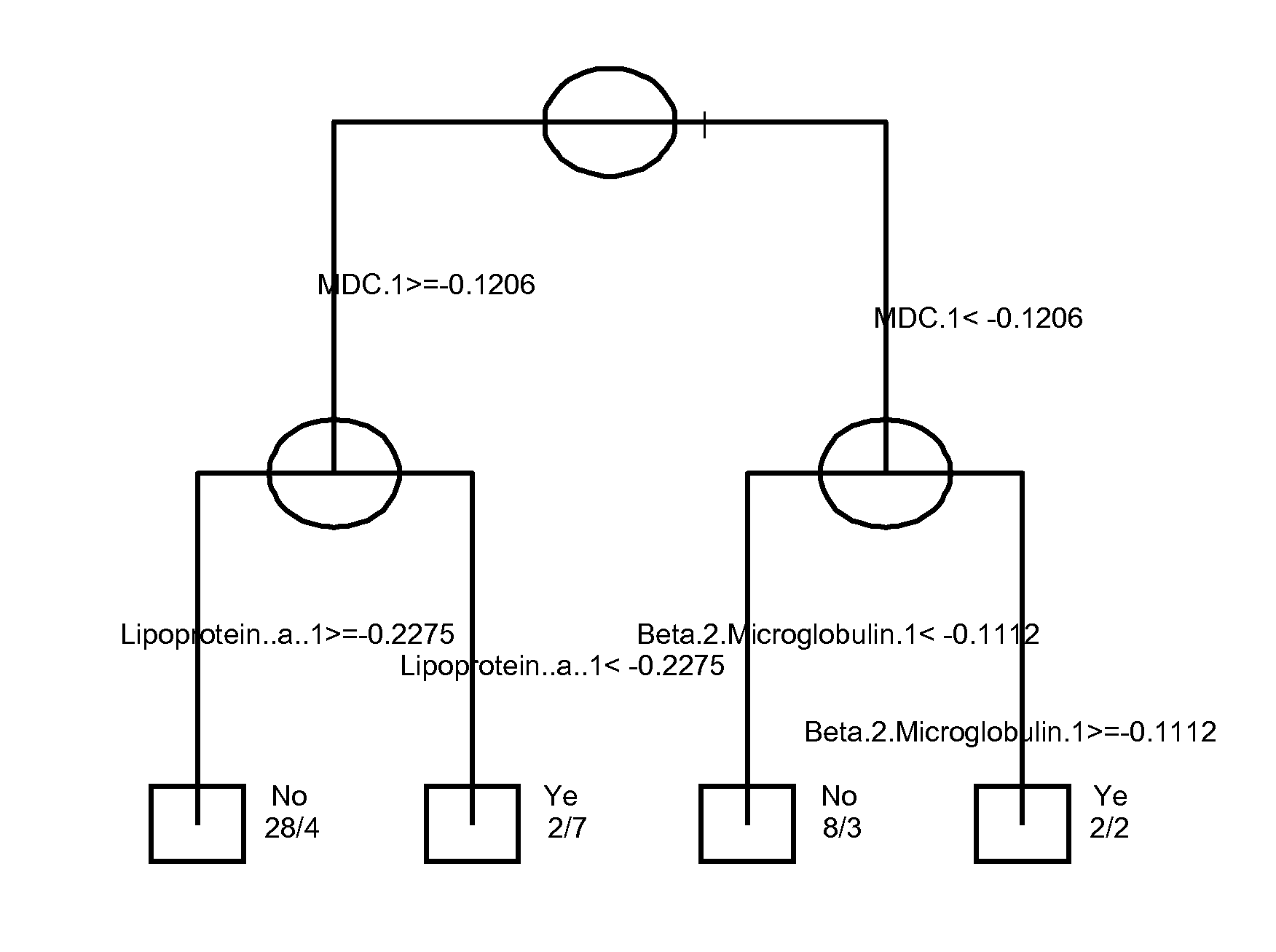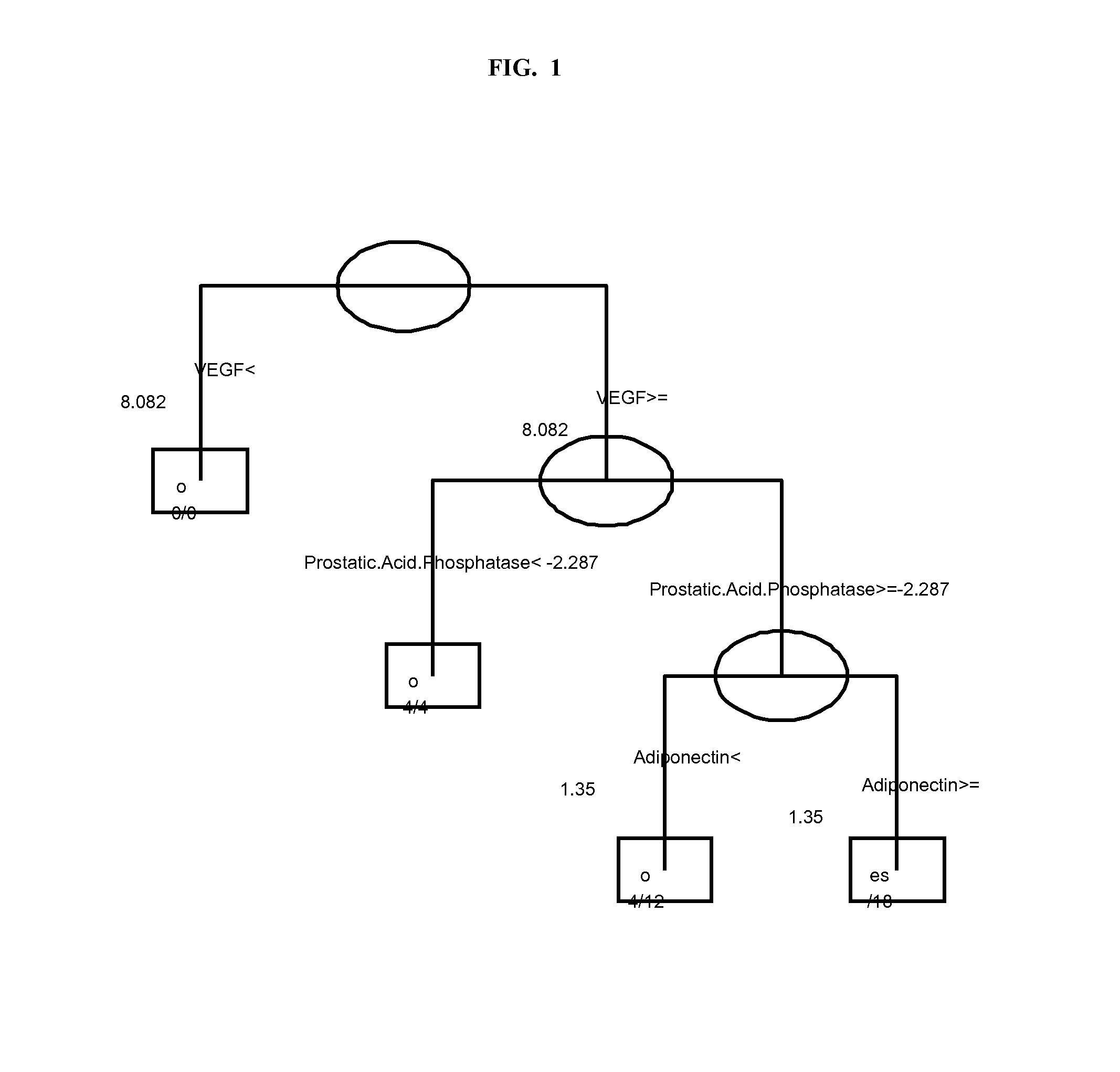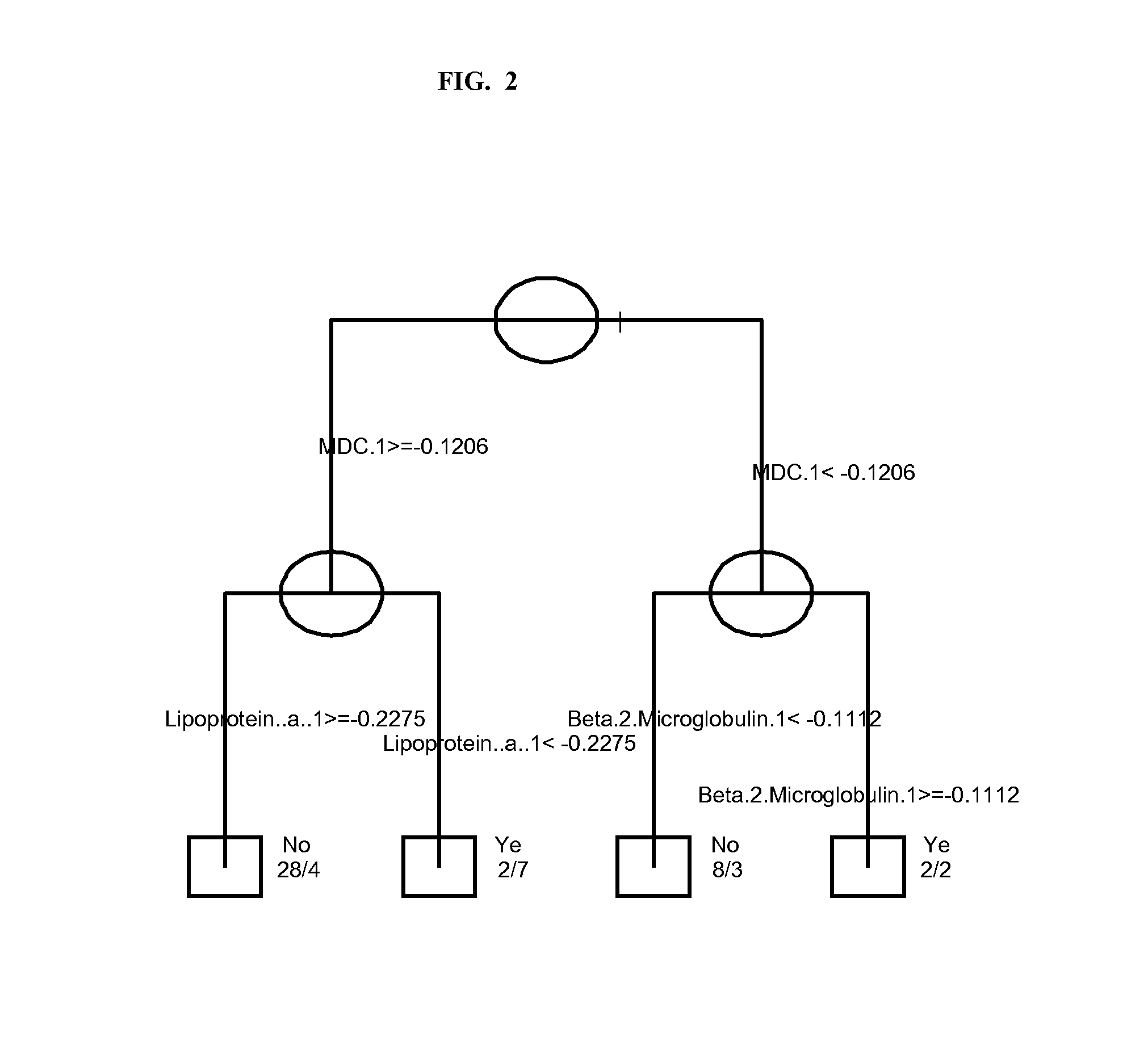Serum Markers Predicting Clinical Response to Anti-TNF Alpha Antibodies in Patients with Psoriatic Arthritis
a technology of serum markers and clinical response, applied in the field of serum markers predicting clinical response to antitnf alpha antibodies in patients with psoriatic arthritis, can solve the problems of univariate set of markers and unfavorable predictive algorithm
- Summary
- Abstract
- Description
- Claims
- Application Information
AI Technical Summary
Benefits of technology
Problems solved by technology
Method used
Image
Examples
example 1
Sample Collection and Analysis
[0176]Serum samples were obtained and evaluated from patients enrolled in a multicenter, randomized, double-blind, placebo-controlled, 3-arm study (with early escape at Week 16) of placebo, golimumab 50 mg, or golimumab 100 mg administered as SC injections every 4 weeks in subjects with active PsA. Subjects were to be assessed for routine efficacy and safety assessments through Week 52, with long term follow-up through 5 years of treatment. Primary efficacy assessments were made at week 14 and week 24. The study was conducted at 57 global investigational sites and enrolled 405 subjects. Subjects may also be receiving methotrexate (MTX), NSAIDS, or oral or low potency (2.5% or less) topical corticosteroids. If receiving MTX, treatment should have started at least 3 months prior to receiving golimumab, not exceed 25 mg / week, be stable and not exhibit serious side effects attributable to MTX. Other treatments are discontinued prior to entry into the study....
example 2
Clinical Endpoint and Data Validation
[0184]The data from 100 patients representing a subgroup of a 405 patient clinical study of golimumab in the treatment of psoriatic arthritis were analyzed using biometric, clinical assessment measurements and the 62 biomarker values.
[0185]Baseline clinical characteristics for subjects in the substudy were well balanced across the three treatment groups (Table 4) where continuous variables are represented as the Mean±SD (Min-Max) and categorical variables as percentages. Note that this CRP measurement was obtained separately from the CRP generated on the protein array. All subjects in the substudy were followed through weeks 14 and 24 and had each of the protocol-specified biomarker assessments at three time points (baseline, Week 4, and Week 14). While some subjects qualified for the early escape phase of the trial (had less than 10% improvement in tender and swollen joint count at week 16), all subjects had clinical endpoint data at 14 and 24 w...
example 3
[0188]At baseline, there were multiple significant associations between biomarker levels and biometric or clinical characteristics of sex, weight, age, baseline CRP, baseline swollen joint count (SJC.bl), and tender joint count at baseline (TJC.bl) found by robust linear regression analysis. For example, leptin correlated with sex, weight, and age with a p-value of less than 0.01.
[0189]Markers that changed between baseline and Week 4, where the change was significantly (p<0.01) different between the placebo group and golimumab treated group include: alpha-1-Antitrypsin, CRP, ENRAGE, haptoglobin, ICAM-1, IL-16, IL-18, IL-1ra, IL-8, MCP-1, MIP-1beta, MMP-3, myeloperoxidase, serum amyloid P, thyroxine binding globulin, TNFRII, and VEGF.
[0190]The clinical study demonstrated that golimumab treatment was significantly superior to placebo across the range of clinical endpoints assessed for subjects with PsA, with the exception of HAQ. Robust logistic regression models were us...
PUM
| Property | Measurement | Unit |
|---|---|---|
| concentration | aaaaa | aaaaa |
| concentrations | aaaaa | aaaaa |
| time | aaaaa | aaaaa |
Abstract
Description
Claims
Application Information
 Login to View More
Login to View More - R&D
- Intellectual Property
- Life Sciences
- Materials
- Tech Scout
- Unparalleled Data Quality
- Higher Quality Content
- 60% Fewer Hallucinations
Browse by: Latest US Patents, China's latest patents, Technical Efficacy Thesaurus, Application Domain, Technology Topic, Popular Technical Reports.
© 2025 PatSnap. All rights reserved.Legal|Privacy policy|Modern Slavery Act Transparency Statement|Sitemap|About US| Contact US: help@patsnap.com



